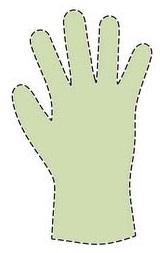Law & Practice
UNITED STATES: No Confusion Between Shades of Green Medical Gloves
Published: June 1, 2020
Darlene Tzou Sughrue Mion, PLLC
Verifier
Catherine Holland Knobbe Martens Irvine, California, USA INTA Bulletins Committee - North America Subcommittee
In an order issued on March 25, 2020, the Trademark Trial and Appeal Board (Board) reversed the refusal to register a color mark for medical gloves by In re Medline Indus., Inc., Serial No. 87680078 (Mar. 25, 2020) [precedential]. Because the applicant claimed a specific Pantone color, and it was a shade easily distinguishable from the cited registration’s claimed Pantone color, the Board found likelihood of confusion to be low and allowed the registration to move forward.
Applicant Medline Industries, Inc., applied to register “the color green (Pantone 2274C)” for “medical examination gloves” on the Supplemental Register. The examining attorney refused the registration based on a likelihood of confusion with Avent, Inc.’s Registration No. 5278439 on the Supplemental Register for “the color green Pantone 7488U” for “gloves for medical use” and “protective gloves for medical use.”
|
|
|
In analyzing the likelihood of confusion factors, the Board often referenced In re Cook Med. Tech. LLC, 105 USPQ2d 1377 (TTAB 2012), the only precedential Board decision regarding the likelihood of confusion between two single-color marks in almost 25 years.
The applicant submitted evidence of numerous third-party uses of different shades of green on medical gloves to illustrate that the market is crowded and so “customers will not likely be confused between any two of the crowd and may have learned to carefully pick out one from the other.” The Board noted that for these third-party uses to be illustrative of a crowded market where consumers can distinguish the two marks, the green color on the gloves must be intended as a source identifier. The applicant failed to show that the third parties were using green medical gloves in a way that consumers would view the color as a mark, so these third-party uses did not support the applicant’s argument.
Despite that, the Board found the third-party uses helpful when analyzing the likelihood of confusion factor where it may consider “any other established fact probative of the effect of use.” In re E.I. DuPont de Nemours & Co., 476 F.2d 1357, 1361 (C.C.P.A. 1973). The many third-party, non-trademark uses of shades of green on medical gloves “tend to impair the cited Supplemental Register mark’s ability to acquire distinctiveness, and to limit its scope of protection if it did acquire distinctiveness.”
Then, the Board looked to the similarity of the marks and found that unlike the marks in Cook Med, neither the cited registration nor the application claim a color using only a “general term.” Both include the Pantone designation, which illustrates that each claims limited rights in a certain shade of green. Furthermore, when comparing these marks from the standpoint of the average customer, the visual appearances are significantly different with one shade being of a “bright, attention-grabbing hue” and the other of a “subdued, pale shade.”
Therefore, with a narrow scope of potential protection for the registered mark, the Board found that the difference in the appearance of the marks was significant enough to make confusion unlikely even though both marks were shades of green on identical goods, and reversed the refusal to register the applicant’s mark on the Supplemental Register.
Although every effort has been made to verify the accuracy of items in the INTA Bulletin, readers are urged to check independently on matters of specific concern or interest. Law & Practice updates are published without comment from INTA except where it has taken an official position.
© 2020 International Trademark Association

